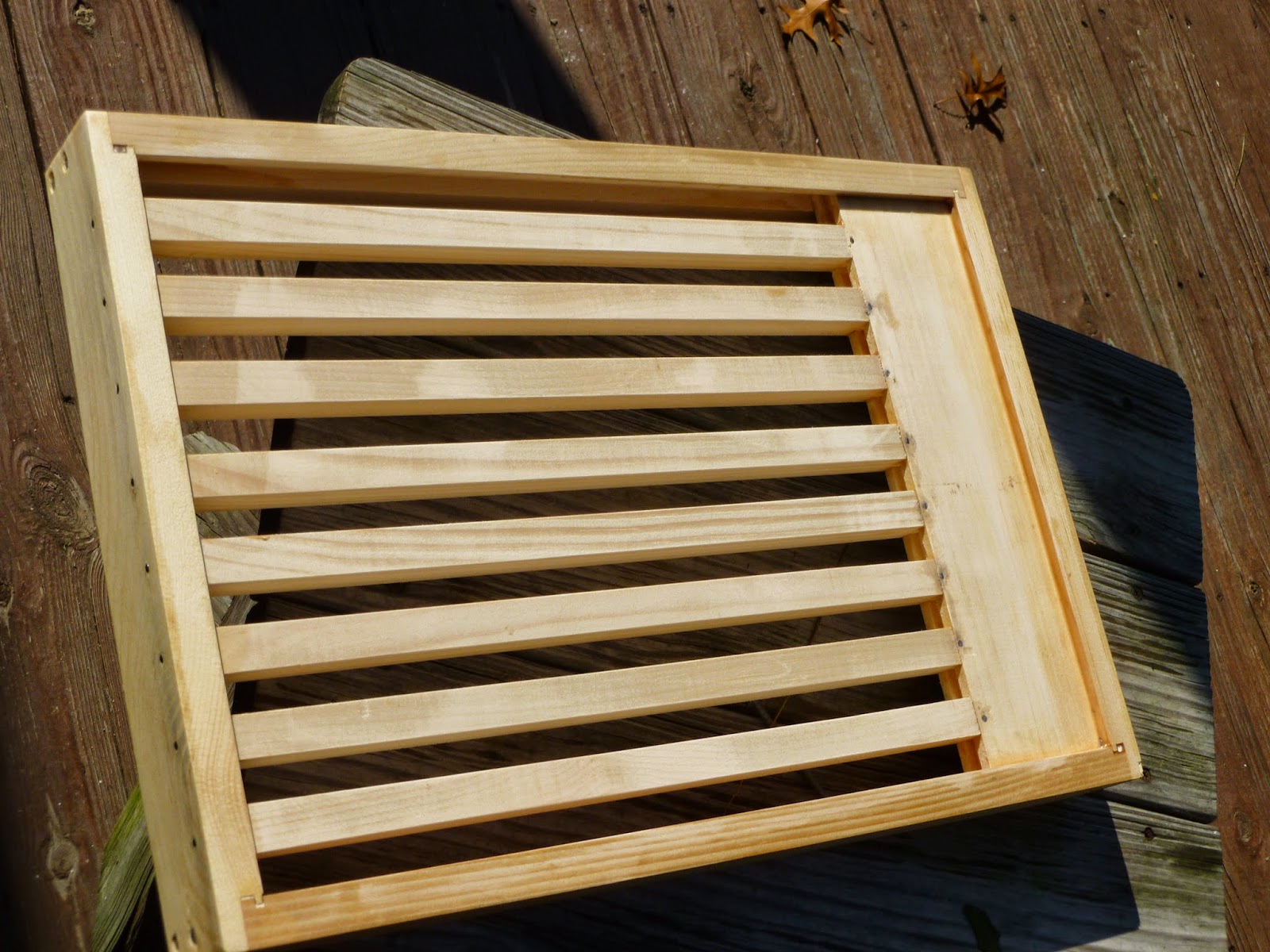An internet search for "overwintering bees" turns up 180,000 results. It is important that your search include where you live because not everyone will have a problem with snow, wind and very cold temperatures, all of which are a problem for bee hives. I added "northern New Jersey" to my search and got a better results list but I still wanted to hear from real people with real experiences. I had consulted my go to books and read bee magazine articles but there is nothing like personal experience to help guide the way.
Like many of the meetings, there was no formal agenda, just lots of sharing and discussion. One member swears by solid bottom boards and wrapping the hives in tar paper. Another member leaves the bottom board open, installed something called a slatted bottom board and does not wrap the hives. Others pile bales of hay around the hives. Others insulate the lid to help with moisture condensation which can drown bees. There is at least one member who tries very hard to replicate nature with his hives and he asked how bees in the wild survive winter without human intervention. Hmmmmm....no exact answers, lots to think about, and not a lot of time until the weather turns cold.
As I listen, I thought back to when I was kid and tried to remember what my dad did with the 10 or so hives that lived in our back yard. They were not visible from the house, so I don't have any recollection of what they looked like in the winter. I'm pretty sure he got bales of hay to help block the wind. I know he would check the hives anytime there was a warm day and he would sometimes feed them with sugar water in front feeders. I also remember that not all the hives would make it through the winter and that would make him very sad. OK. I don't want to be sad in the spring. time to take some action to help the girls overwinter.
So here's what we did:
*Added a slatted bottom board which allows air flow, gives them a bit more leg room at the bottom and prevents cool drafts at the front door.
 |
| slatted bottom board |
 |
| insulation inside the lid |
 |
| insulation for north and west sides |
 |
| bungee cords to hold the insulation |
 |
| bungee cords and corner protectors |
 |
| Dobie keeping things under control |
OK mother nature, bring on winter. McBees are ready!
No comments:
Post a Comment